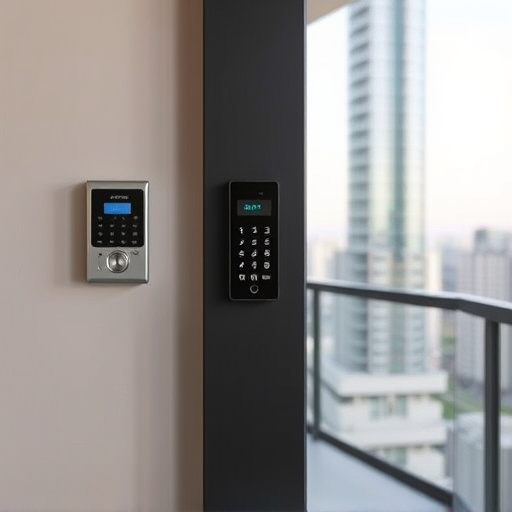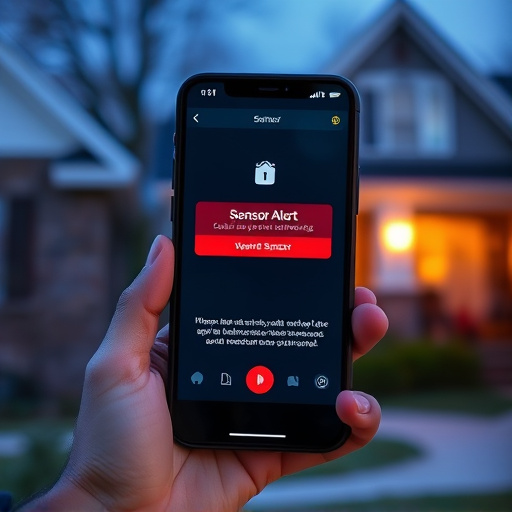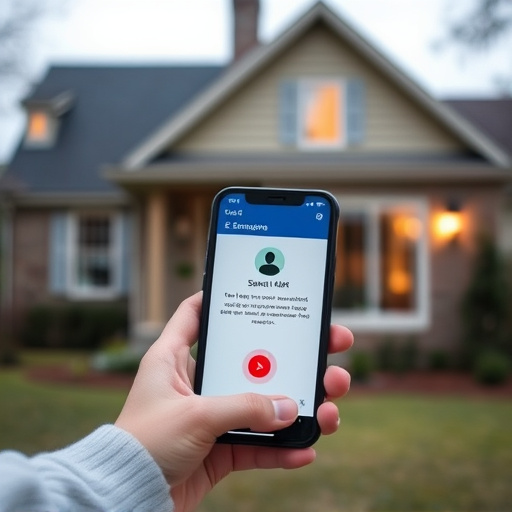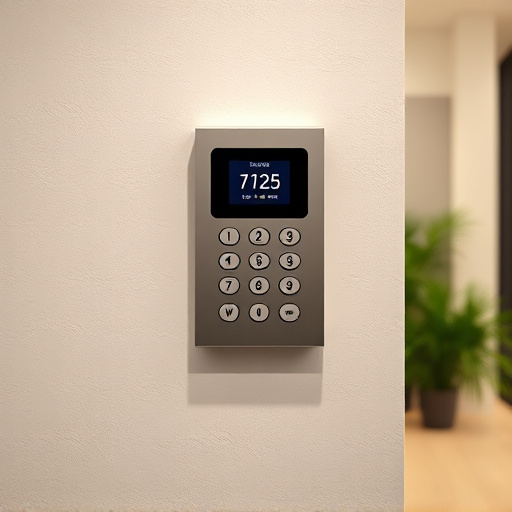
Category: Future Trends in Personal Safety Products
Future Trends in Personal Safety Products: A Comprehensive Overview
Introduction
Personal safety products have evolved significantly over the years, driven by technological advancements, growing global awareness, and changing consumer needs. As we navigate an increasingly complex and unpredictable world, understanding and staying ahead of future trends in this sector is crucial for enhancing individual well-being and security. This article delves into the dynamic landscape of personal safety products, exploring emerging technologies, global influences, economic considerations, policy frameworks, and real-world applications that are shaping their future trajectory. By examining these various facets, we aim to equip readers with valuable insights into the exciting possibilities and challenges ahead in this vital field.
Understanding Future Trends in Personal Safety Products: A Holistic Perspective
“Future Trends in Personal Safety Products” refers to the collective advancements and shifts in design, functionality, and overall approach towards developing solutions that safeguard individuals in their daily lives. This encompasses a wide range of items, from wearable devices and smart home systems to advanced security software and innovative emergency response technologies. The core components of this trend include:
- Technological Innovation: Leveraging artificial intelligence (AI), the Internet of Things (IoT), biometric identification, and other cutting-edge technologies to create smarter, more responsive safety products.
- Data Analytics: Utilizing data to predict and prevent potential threats, optimize product performance, and tailor safety solutions to individual needs.
- Global Awareness and Collaboration: Increasing international cooperation and knowledge-sharing efforts to address shared safety challenges and develop standardized best practices.
- User-Centric Design: Focusing on creating products that are intuitive, accessible, and customizable to cater to diverse user preferences and abilities.
Historically, personal safety products have evolved from simple physical barriers like locks and keys to more sophisticated mechanisms such as alarm systems, surveillance cameras, and personal tracking devices. Each advancement has built upon the previous one, driven by societal needs, technological breakthroughs, and changing lifestyles. Today, we stand at the precipice of another transformative era where technology is converging with everyday life, offering unprecedented opportunities to enhance personal safety in ways never before imagined.
Global Impact and Trends: A Diverse Landscape
The influence of future trends in personal safety products extends far beyond national borders, shaping diverse regions in unique ways. Several key global trends are worth highlighting:
-
Urbanization and Smart Cities: Rapid urbanization in many developing countries is driving the adoption of smart city initiatives that integrate advanced security systems into urban infrastructure. For instance, cities like Singapore and Dubai have implemented IoT-enabled streetlights and surveillance cameras that communicate with central command centers for efficient and proactive public safety management.
-
Digital Transformation in Developed Nations: Countries like the United States, Canada, and many European nations are witnessing a surge in demand for digital personal safety solutions, including wearable devices, smart home systems, and mobile security apps. This trend is fueled by growing concerns over privacy, rising crime rates, and an aging population seeking enhanced protection.
-
Emerging Markets and Accessibility: In regions with limited access to traditional safety services, affordable and accessible personal safety products offer a lifeline. For example, in Africa and parts of Asia, mobile phone-based security systems have gained popularity due to their simplicity and widespread mobile penetration rates.
-
Cultural and Regional Differences: Safety preferences and priorities vary across cultures and regions. In some countries, traditional methods like home security locks and alarm systems are preferred, while others embrace innovative solutions like biometric access control and personal emergency response devices (PERDs).
Economic Considerations: Market Dynamics and Opportunities
The economic landscape of future trends in personal safety products is dynamic and multifaceted, influenced by various factors:
-
Market Growth: The global personal safety products market is projected to grow at a CAGR of approximately 7% from 2022 to 2030, reaching a value of USD 165.4 billion by 2030 (Source: Grand View Research). This growth is primarily driven by the increasing adoption of smart home technologies, rising security concerns in both developed and developing nations, and the growing elderly population requiring enhanced protection.
-
Investment Patterns: Venture capital firms and private equity investors are increasingly targeting personal safety tech startups, recognizing their potential for disruption. In 2021 alone, over $500 million was invested in smart home security companies, highlighting the market’s attractiveness (Source: CB Insights).
-
Cost-Benefit Analysis: As personal safety products become more sophisticated and integrated into daily life, consumers are increasingly willing to invest in solutions that offer perceived long-term benefits, such as enhanced peace of mind, improved property protection, and better emergency response capabilities.
-
Disruption and Competition: Emerging technologies like blockchain and 5G are poised to disrupt traditional safety product ecosystems, creating new market opportunities. For example, blockchain can enhance data security and privacy in IoT-connected devices, while 5G enables faster communication for real-time emergency responses.
Technological Advancements: Driving Innovation Forward
Technological advancements are at the heart of future trends in personal safety products, paving the way for smarter, more responsive, and efficient solutions. Several key areas of innovation include:
-
Artificial Intelligence (AI): AI algorithms power predictive analytics, enabling devices to anticipate potential threats based on historical data and real-time inputs. For instance, smart home systems can learn users’ routines and automatically adjust security settings accordingly.
-
Internet of Things (IoT): IoT connectivity allows personal safety products to communicate with each other and central command centers, facilitating seamless integration within the “smart home” ecosystem. Connected devices can provide a holistic view of an individual’s environment, enhancing overall security.
-
Biometrics: Fingerprint, facial recognition, and iris scanning technologies offer highly secure authentication methods for access control, mobile banking, and identity verification. These biometric systems are increasingly integrated into safety products like smartphones, smart locks, and PERDs.
-
Wearable Technology: Wearables, such as fitness trackers, smartwatches, and dedicated personal safety devices, monitor vital signs, track activity levels, and provide real-time location data, empowering users with proactive health and safety insights.
-
Enhanced Communication Protocols: 5G technology enables faster data transfer rates, crucial for real-time emergency response systems and remote monitoring of vulnerable individuals. This advancement ensures that critical information reaches security personnel or caregivers swiftly.
Policy and Regulation: Navigating Legal Landscapes
As personal safety products become more sophisticated and pervasive, regulatory frameworks play a vital role in ensuring consumer protection, privacy, and data security. Key policies and regulations shaping this sector include:
-
Data Privacy Laws: With the increasing collection and sharing of user data, stringent data privacy laws like GDPR in Europe, CCPA in California, and similar regulations worldwide are crucial for safeguarding consumer information. These laws govern how personal safety product manufacturers collect, store, and share user data.
-
Product Safety Standards: Organizations like UL (Underwriters Laboratories) and Intertek set safety standards for various personal safety products, ensuring their effectiveness and reliability. Compliance with these standards is mandatory in many regions, particularly for products involving electrical or mechanical components.
-
Telecommunications Regulations: As IoT devices become more prevalent, regulations governing the Internet of Things are gaining prominence. These include rules related to device interoperability, data security, and consumer consent for data collection.
-
Emerging Jurisdiction-Specific Rules: Some countries are introducing unique regulations tailored to emerging safety technologies. For example, China has implemented strict guidelines for facial recognition technology use, while India has proposed regulations for the use of AI in automated driving systems.
Challenges and Criticisms: Overcoming Barriers to Adoption
Despite the immense potential of future trends in personal safety products, several challenges and criticisms hinder widespread adoption and acceptance:
-
Privacy Concerns: The collection and analysis of vast amounts of personal data raise privacy issues. Users worry about unauthorized access to their information and the potential misuse of their data by third parties.
-
Data Security Risks: As more devices become connected, the attack surface for cybercriminals expands. Personal safety products must be designed with robust cybersecurity measures to protect user data from hacking attempts and data breaches.
-
Cost and Accessibility: Advanced personal safety technologies can be expensive, making them inaccessible to low-income households or individuals in developing regions. Addressing affordability and accessibility is crucial for ensuring widespread adoption.
-
Interoperability Issues: The fragmented nature of the IoT ecosystem poses challenges related to device compatibility and data sharing. Standardization efforts are needed to ensure that different safety products can seamlessly communicate and collaborate.
-
Regulatory Complexity: Navigating a maze of varying regulations across jurisdictions can be daunting for manufacturers, particularly those operating globally. Simplifying regulatory requirements would encourage innovation and market growth.
To address these challenges, collaborative efforts among industry leaders, policymakers, and technology experts are essential. Strategies include enhancing cybersecurity standards, promoting data privacy awareness, offering affordable options, and fostering international cooperation to establish consistent regulations.
Case Studies: Real-World Applications and Lessons Learned
1. Smart Home Security Systems in North America
In North American cities like New York and Los Angeles, smart home security systems have become increasingly popular among homeowners seeking enhanced protection. These systems leverage IoT devices, such as door/window sensors, motion detectors, and surveillance cameras, to provide real-time alerts and remote monitoring capabilities. By integrating these devices with central command centers, emergency services can be dispatched promptly in the event of a break-in or other security breaches.
Lessons Learned: This case study highlights the success of integrating advanced security technologies into the fabric of urban homes. However, it also underscores the importance of addressing privacy concerns by implementing robust data encryption and user consent mechanisms to protect sensitive information.
2. Mobile Security Apps in Africa
In many African countries, mobile security apps have filled a critical gap in traditional safety net services. These apps leverage mobile phone networks to enable users to quickly access emergency services, share their location with trusted contacts, and receive real-time safety alerts. For example, the M-Pesa platform in Kenya allows users to send and receive money securely while also providing a means for quick emergency communication.
Lessons Learned: Mobile security apps have proven to be highly effective in regions with limited access to traditional safety infrastructure. Their success underscores the power of leveraging widespread mobile penetration rates and affordable data plans to deliver essential safety services to underserved populations.
3. Biometric Access Control in Smart Cities
Several smart cities around the world, including Singapore and London, have implemented biometric access control systems at public transportation hubs and other critical infrastructure locations. These systems use fingerprint or facial recognition technology to verify users’ identities, ensuring secure entry and exit from facilities while streamlining passenger flows.
Lessons Learned: Biometric access control has demonstrated its effectiveness in enhancing security and improving the user experience. However, concerns regarding data privacy and potential false positives must be addressed through stringent data protection measures and continuous system refinement.
Future Prospects: Emerging Trends and Strategic Considerations
As we peer into the future, several emerging trends and strategic considerations shape the trajectory of personal safety products:
-
Hyper-Personalized Safety Solutions: Advanced AI algorithms enable the creation of customized safety plans tailored to individual needs, preferences, and risk profiles. This includes personalized emergency response protocols, proactive health monitoring, and location-based safety alerts.
-
Blending Physical and Digital Security: Future personal safety products will seamlessly integrate physical security measures (e.g., locks, alarms) with digital solutions (e.g., mobile apps, IoT devices), offering users a comprehensive security ecosystem that adapts to their changing circumstances.
-
Quantum Technology Applications: While still in the early stages, quantum computing and cryptography have the potential to revolutionize data security, enabling unhackable communication protocols for personal safety products.
-
Sustainable Safety Solutions: As environmental consciousness grows, personal safety product manufacturers are exploring eco-friendly materials, energy-efficient designs, and sustainable manufacturing processes to reduce their carbon footprint.
-
Global Standardization Efforts: International collaborations will intensify to establish consistent standards for data privacy, cybersecurity, and interoperability, fostering a more unified global safety ecosystem.
Conclusion: A Secure Future for All
The future of personal safety products is brimming with promise, driven by technological advancements, global awareness, and evolving consumer needs. As we navigate this dynamic landscape, several key takeaways emerge:
-
Innovation and Adaptability: The ability to innovate and adapt quickly to changing circumstances will be a defining characteristic of successful personal safety product manufacturers. Embracing emerging technologies, such as AI, IoT, and biometrics, while addressing privacy and security concerns, is essential.
-
Global Collaboration: International cooperation and knowledge sharing are vital for tackling shared safety challenges and developing standardized best practices. Collaborative efforts can accelerate the adoption of effective safety solutions worldwide.
-
User-Centric Design: Designing personal safety products with a strong focus on user experience, accessibility, and customization will enhance their appeal and utility in diverse settings.
-
Addressing Inequalities: Ensuring that future trends in personal safety products are accessible to all, regardless of income or geographic location, is crucial for fostering a safer, more inclusive global community.
By embracing these principles and strategically navigating the challenges ahead, the personal safety industry can play a pivotal role in enhancing individual well-being, promoting security, and building resilient communities worldwide.
FAQ Section: Answering Common Concerns
Q: How will future trends impact traditional security services?
A: Future trends are not meant to replace traditional security services but rather complement them. Advanced personal safety products can augment existing services by providing real-time data, improved communication, and enhanced proactive response capabilities, ultimately leading to more efficient and effective emergency management.
Q: What role does data privacy play in the development of personal safety products?
A: Data privacy is a critical consideration in the design and deployment of personal safety products. Manufacturers must ensure that user data is collected, stored, and shared securely, respecting individual privacy rights while enabling valuable insights for product improvement and personalized services.
Q: Can personal safety products truly revolutionize emergency response times?
A: Absolutely. Advanced IoT-enabled devices, integrated with centralized command centers, can significantly reduce response times by providing real-time location data, alerting emergency services promptly, and enabling proactive intervention in critical situations.
Q: How will quantum technology impact personal safety product security?
A: Quantum technology has the potential to revolutionize data security by offering unbreakable encryption protocols. This could enhance the security of communication channels between personal safety devices, ensuring that sensitive information remains secure even in highly interconnected environments.
Q: What are some affordable options for enhancing personal safety in developing regions?
A: Mobile security apps, community-based watch programs, and low-cost IoT devices, such as basic surveillance cameras or door/window sensors, can significantly enhance safety in resource-constrained settings. Leveraging mobile network coverage and local partnerships is key to making these solutions accessible.









